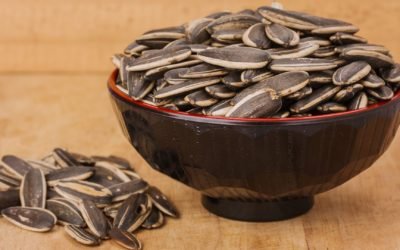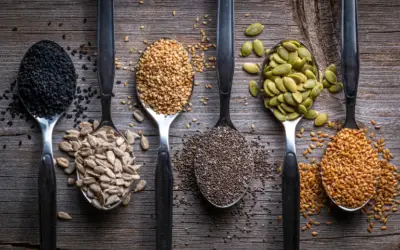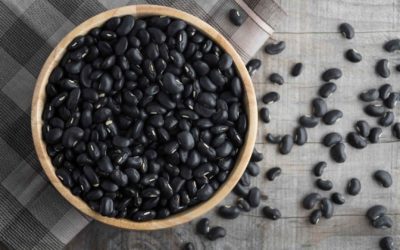Oats have long been celebrated for their nutritional value, heart-healthy properties, and versatility in cooking. Whether you’re making a hearty breakfast, baking cookies, or preparing a savory dish, oats can be a fantastic ingredient. However, not all oats are created equal. With several types available on the market—each processed differently—their texture, cooking time, and best uses vary widely.
In this article, we will explore the different types of oats, compare their characteristics, and discuss how to use each variety effectively.
1. Whole Oat Groats
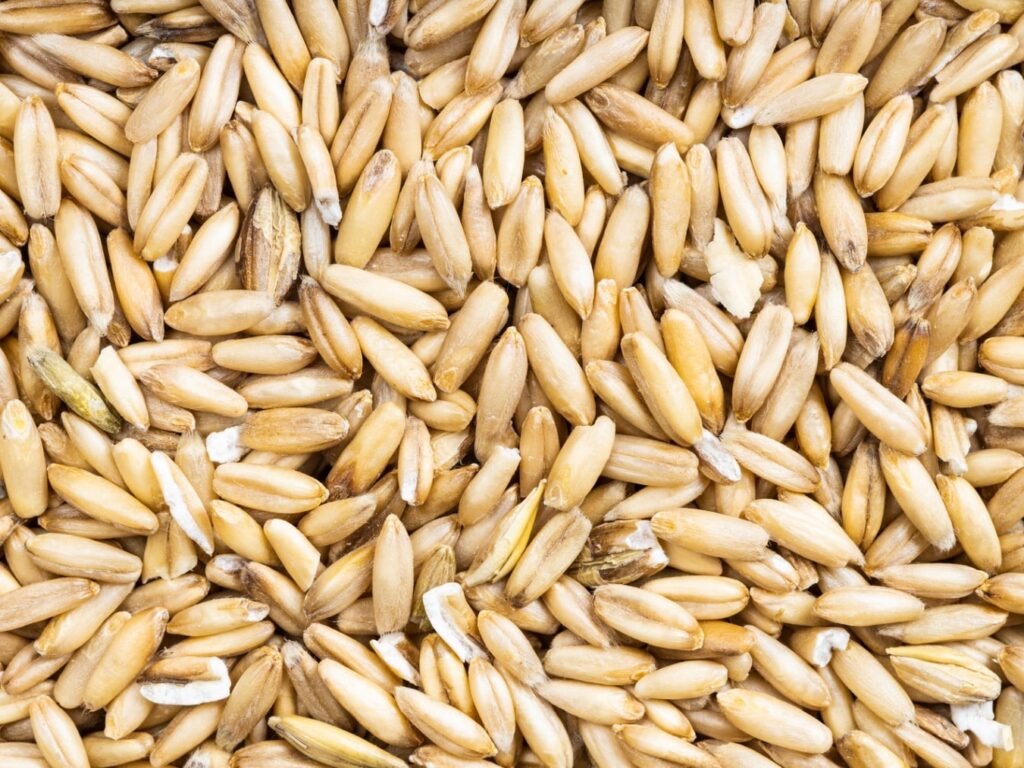
What Are Whole Oat Groats?
Whole oat groats are the most unprocessed and natural form of oats you can find. After oats are harvested, the only part that is removed is the inedible outer husk. What remains—the bran, endosperm, and germ—is a complete grain packed with nutrients. Because groats are minimally altered, they retain the maximum amount of their original fiber, healthy fats, and micronutrients. Think of them as the oat equivalent of brown rice—dense, hearty, and extremely satisfying.
Texture and Flavor of Whole Oat Groats
Whole oat groats have a distinctive nutty flavor and a firm, chewy texture that sets them apart from more processed oats. When cooked, they hold their shape well, offering a bite that feels more like a whole grain than a traditional bowl of oatmeal. Their density also means they’re quite filling and make an excellent base for savory or sweet meals.
Cooking Time and Preparation
One of the main considerations when using whole oat groats is their longer cooking time—usually 45 to 60 minutes. However, this can be shortened by soaking them overnight, which reduces cooking to about 30 minutes. To prepare, combine 1 part oat groats with 3 parts water or broth, bring to a boil, then simmer gently over low heat until tender. Stir occasionally and drain any excess liquid at the end.
Best Ways to Use Whole Oat Groats
Whole oat groats are incredibly versatile. In savory cooking, they can be used as a hearty substitute for rice or other grains in dishes like grain bowls, pilafs, or stuffed vegetables. Their chewy texture also holds up well in soups and stews, adding both body and nutrition. If you prefer a warm breakfast, groats can be cooked into a deeply satisfying porridge, especially when simmered slowly with milk and topped with fruit or nuts.
Nutritional Profile of Whole Oat Groats
Since they are the least processed form of oats, whole oat groats are the most nutrient-dense. They are high in dietary fiber—especially beta-glucan, which supports heart health—and rich in plant-based protein, iron, magnesium, and B vitamins. Their low glycemic index also helps regulate blood sugar levels, making them an excellent choice for sustained energy and blood sugar management.
Buying Whole Oat Groats
When shopping for whole oat groats, look for them in the bulk section of natural food stores, organic grocers, or specialty health food shops. They’re also available online, often labeled as “whole oat groats” or “hulled oats.” Opt for certified organic oats if you want to avoid pesticide residues. If you’re buying in bulk, make sure to store groats in an airtight container in a cool, dry place to preserve their freshness. Because they are less common than rolled or steel-cut oats, buying in larger quantities when you find a trusted source can be convenient and cost-effective.
2. Steel-Cut Oats (aka Irish Oats)

What Are Steel-Cut Oats?
Steel-cut oats are made by taking whole oat groats and chopping them into 2 to 4 small pieces using sharp steel blades—hence the name. This minimal form of processing keeps the grain close to its natural state while giving it a distinctive coarse texture. Unlike rolled or quick oats that are flattened during processing, steel-cut oats retain a chunkier, grain-like structure. Because they’re less processed, they offer a slower digestion rate and more satisfying bite.
Texture and Flavor
The hallmark of steel-cut oats is their hearty, chewy texture. When cooked, they create a thick and creamy oatmeal base with a subtle nutty flavor that adds depth to both sweet and savory dishes. They’re ideal for those who find regular oatmeal too soft or mushy, offering a more toothsome alternative that feels more like eating a whole grain than a porridge.
Cooking Time and Preparation
Steel-cut oats take more time to prepare than rolled or quick oats—typically around 20 to 30 minutes of stovetop cooking. If you’re short on time, soaking the oats overnight or using a pressure cooker can reduce the cooking time significantly. To cook, simply simmer 1 cup of steel-cut oats in 3 cups of water or milk over medium-low heat. Stir occasionally to prevent sticking and continue cooking until the oats reach your desired creaminess. For extra flavor, you can toast the oats briefly in a dry pan before adding liquid.
Best Ways to Use Steel-Cut Oats
Steel-cut oats are incredibly versatile and lend themselves well to both sweet and savory dishes. They’re most commonly used for oatmeal, offering a warm and comforting breakfast that holds its texture well even after sitting. You can also use them in savory grain bowls topped with eggs, avocado, sautéed greens, or roasted vegetables. Because of their firm texture, steel-cut oats also make a great addition to baked goods like granola bars, where they provide extra crunch and structure.
Nutritional Profile of Steel Cut Oats
Nutritionally, steel-cut oats are an excellent source of fiber, particularly beta-glucan, which is known to support heart health by lowering cholesterol. They are rich in complex carbohydrates, plant-based protein, and essential B vitamins like thiamine and folate. Their slower digestion rate gives them a lower glycemic index than more processed oat varieties, making them a solid option for those managing blood sugar levels or looking for a longer-lasting energy source.
Buying Steel-Cut Oats
Steel-cut oats are widely available in supermarkets, usually sold in bags, boxes, or bulk bins in the grains or natural foods section. When choosing a product, look for plain, unsweetened steel-cut oats with no added flavors or preservatives. Organic options are a good choice if you want oats free from synthetic pesticides or GMOs. You can also find quick-cooking versions of steel-cut oats, which have been lightly pre-steamed to reduce cooking time—great for busy mornings. Store them in an airtight container in a cool, dry place to preserve freshness and prevent moisture or pests from getting in.der.
3. Scottish Oats

What Are Scottish Oats?
Scottish oats are made by stone-grinding whole oat groats into a meal-like consistency. Unlike steel-cut oats, which are chopped into coarse pieces, Scottish oats are milled into finer granules that result in a smooth and creamy texture when cooked. This traditional method of processing oats dates back centuries in Scotland, where porridge is a dietary staple. The gentle grinding technique preserves the whole grain while transforming it into a more delicate and quick-cooking form.
Texture and Flavor of Scottish Oats
When cooked, Scottish oats produce a creamy and smooth porridge, with a texture that falls somewhere between the chunkiness of steel-cut oats and the silkiness of oat flour. Though softer, they still retain a slight chew, offering a comforting balance of richness and texture. Flavor-wise, they share the same natural nuttiness and wholesome taste of other whole grain oats but present it in a more mellow, velvety form.
Scottish Oats Cooking Time and Preparation
Scottish oats are quicker to cook than steel-cut varieties due to their finer consistency. A typical cooking time ranges from 10 to 15 minutes, making them a convenient option for a warm, nourishing breakfast. To prepare, combine 1 cup of Scottish oats with 3 cups of water or milk in a saucepan. Bring to a boil, then reduce the heat and simmer, stirring frequently to prevent sticking and achieve a smooth consistency. The result is a creamy porridge that thickens beautifully and adapts well to both sweet and savory flavorings.
Best Uses for Scottish Oats
The most common and traditional use for Scottish oats is in porridge—a dish that is still a breakfast favorite in Scotland and increasingly popular around the world. Their creamy texture also makes them a wonderful thickening agent for soups and stews. Additionally, Scottish oats can be incorporated into baked goods such as oatcakes or pancakes, where they provide a hearty texture without being overly coarse. You can even use them in place of breadcrumbs or flour in savory recipes like meatloaf or veggie patties to boost fiber and nutrition.
Nutritional Profile
Scottish oats retain most of the nutritional value found in steel-cut and whole oat groats. They are rich in dietary fiber, particularly beta-glucan, which supports heart health and helps regulate blood sugar. They also offer a good source of plant-based protein, B vitamins, and important minerals like iron, magnesium, and zinc. Because they’re ground more finely, Scottish oats may be slightly easier to digest than steel-cut oats while still offering the benefits of whole grains.
Buying Scottish Oats
Scottish oats are sometimes harder to find than rolled or steel-cut varieties, but they are well worth seeking out. Look for them in health food stores, organic markets, or online retailers, often labeled as “Scottish oats,” “stone-ground oats,” or “porridge oats.” Avoid instant or flavored versions if you want the pure, whole grain experience. Organic or non-GMO certifications can offer added peace of mind if you’re concerned about chemical exposure. Once opened, store Scottish oats in an airtight container in a cool, dry place to preserve freshness and prevent clumping or spoilage.
4. Rolled Oats (aka Old-Fashioned Oats)
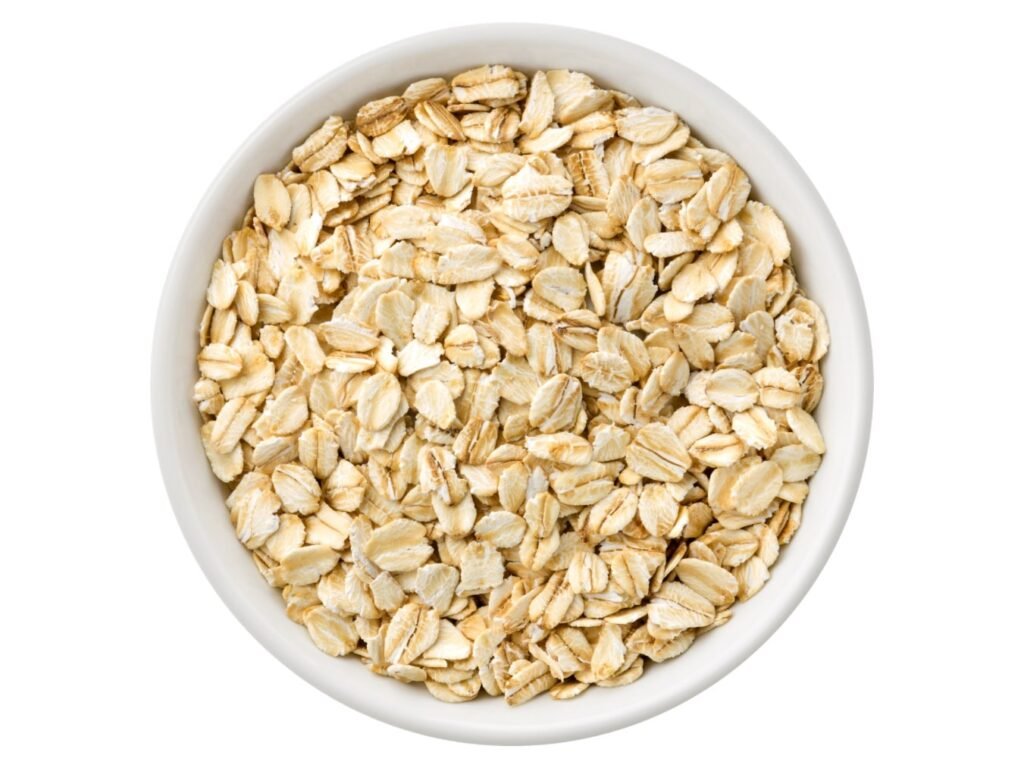
What Are Rolled Oats?
Rolled oats, also called old-fashioned oats, are one of the most commonly consumed and widely available forms of oats. They are made by first steaming whole oat groats to soften them and then rolling them into flat flakes using large rollers. This process increases their surface area, making them quicker to cook and more versatile in recipes. While they undergo more processing than steel-cut or Scottish oats, they still retain most of the grain’s bran and germ, keeping them rich in nutrients and fiber.
Texture and Flavor
When cooked, rolled oats take on a soft, creamy texture while still retaining a light chew. Their mild flavor makes them a blank canvas for both sweet and savory additions. Unlike steel-cut oats, which stay firm, rolled oats absorb liquid quickly and break down into a smooth consistency. This makes them especially appealing to people who prefer a gentler, porridge-like mouthfeel without the coarseness of less-processed oats.
Cooking Time and Preparation
Rolled oats are quick and convenient to prepare, typically requiring only 5 to 10 minutes on the stovetop. The basic cooking ratio is 1 cup of rolled oats to 2 cups of water or milk. Bring the liquid to a boil, stir in the oats, reduce the heat, and simmer while stirring occasionally until the desired thickness is reached. Their quick cooking time and flexibility also make them suitable for the microwave or instant pot.
A popular no-cook method is to make overnight oats. Simply mix equal parts rolled oats and milk (or yogurt), let it sit in the refrigerator overnight, and enjoy a ready-made, creamy breakfast in the morning. You can customize overnight oats with fruits, nuts, chia seeds, or spices for extra flavor and nutrition.
Best Uses for Rolled Oats
Rolled oats are the workhorse of the oat world and are incredibly versatile in both cooking and baking. They’re a staple ingredient for classic hot oatmeal, and their balanced texture makes them ideal for creating homemade granola, baked oatmeal, and oat-based energy bars. In baking, rolled oats are commonly used in cookies, muffins, breads, and even pie toppings, adding heartiness and a rustic texture. Thanks to their absorbent nature, they’re also a favorite for making overnight oats—a no-fuss, time-saving breakfast that’s both healthy and customizable.
Nutritional Profile
Although rolled oats are slightly more processed than steel-cut or whole oat groats, they still offer impressive nutritional benefits. They are rich in complex carbohydrates, soluble fiber (especially beta-glucan), and plant-based protein. Rolled oats support heart health, digestive function, and blood sugar regulation. While the steaming and rolling process slightly lowers their fiber content compared to steel-cut oats, they remain a highly nutritious whole grain. They also contain important vitamins and minerals such as manganese, phosphorus, magnesium, and iron.
Buying Rolled Oats
Rolled oats are widely available in nearly every grocery store, making them one of the most accessible forms of oats. You’ll find them in bulk bins, cereal aisles, or natural food sections, often labeled as “old-fashioned oats” or “rolled oats.” For the healthiest option, choose plain, unflavored oats without added sugars or artificial flavors. Organic and gluten-free versions are available if you’re looking to avoid pesticide residues or gluten contamination. Because rolled oats have a longer shelf life than more perishable grains, buying in bulk is both economical and practical. Store them in a cool, dry place in an airtight container to maintain freshness and keep out moisture and pests.
5. Quick Oats (aka Instant Rolled Oats)
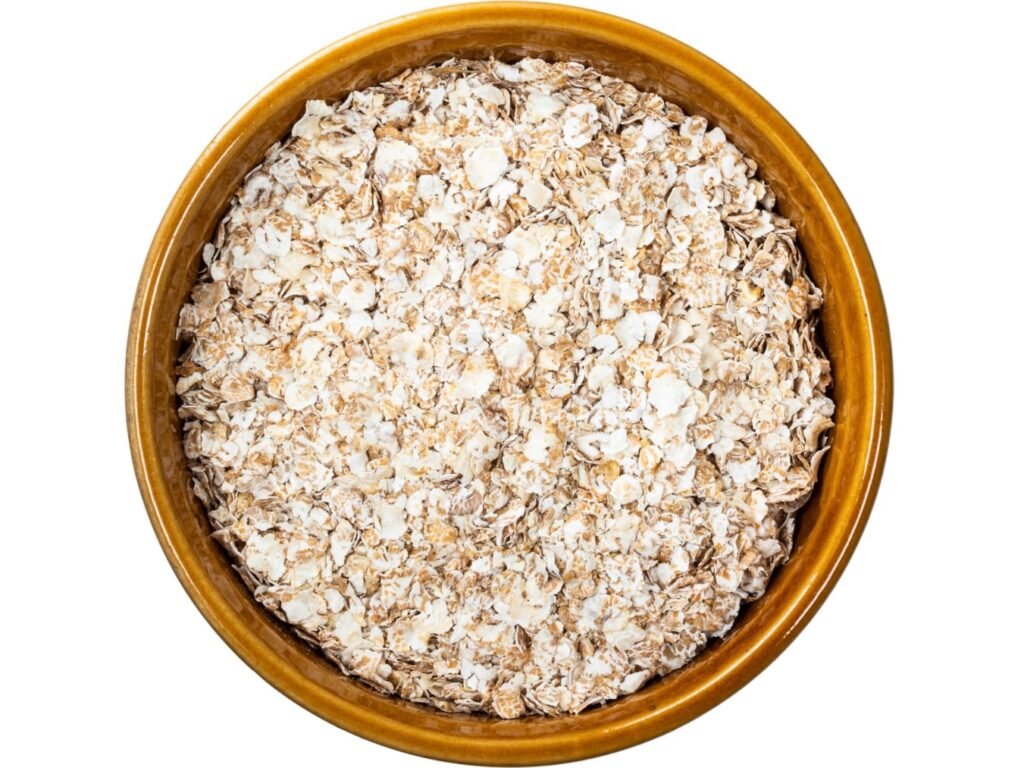
What Are Quick Oats?
Quick oats, sometimes labeled as instant rolled oats, are the most processed form of oat flakes made from whole oat groats. To create them, manufacturers start with rolled oats, then steam them longer and roll them out even thinner. Some varieties are even pre-cooked and then dehydrated to make them ready for near-instant preparation. This additional processing breaks down the oats further, significantly reducing cooking time. While quick oats still retain many of the nutrients found in less-processed oats, the finer texture alters their cooking properties and nutritional profile slightly.
Texture and Flavor
Quick oats have a much finer, softer texture than rolled or steel-cut oats. When cooked, they become very soft—almost mushy—which makes them especially easy to digest. This consistency is ideal for those who prefer a smoother porridge or require a softer food texture, such as babies, older adults, or anyone with chewing difficulties. In terms of flavor, quick oats retain the mild nuttiness of whole oats, but with a less robust bite and more uniform texture.
Cooking Time and Preparation
The primary appeal of quick oats lies in their convenience. They typically require just 1 to 3 minutes of cooking. For an instant oatmeal, all you need to do is add boiling water or hot milk to a bowl of quick oats, stir, and let them sit for a minute or two. Alternatively, you can microwave them with liquid for around one minute. Because of their soft, pre-processed nature, they’re perfect for fast-paced mornings or for travel, camping, or work snacks when you need a nutritious meal in seconds.
Best Uses for Quick Oats
Quick oats are perfect for recipes where a smooth texture is desired. They’re ideal for instant oatmeal, giving you a warm and filling breakfast in no time. They’re also great in baking where you want oats to integrate seamlessly into the batter—such as in muffins, pancakes, and soft oatmeal cookies. Due to their mild consistency, they are commonly used in baby food, meal replacements, or soft-textured meal preparations. However, because they break down easily, they’re not recommended for granola, energy bars, or recipes where you want a chewy or crunchy texture.
Nutritional Profile
While quick oats remain a whole grain and still offer good nutritional value, they have a slightly lower fiber content compared to rolled or steel-cut oats due to the extra processing. They still contain beneficial beta-glucan fiber, which supports heart health, helps lower cholesterol, and promotes fullness. However, their finer structure gives them a higher glycemic index (GI), meaning they can cause a quicker spike in blood sugar. This makes them less ideal for individuals managing blood sugar levels, such as those with diabetes. Nonetheless, they are still a healthier choice than heavily sweetened or flavored commercial instant oatmeal packets.
Buying Quick Oats
Quick oats are widely available and easy to find in supermarkets, convenience stores, and online retailers. You’ll typically see them labeled as “quick oats,” “instant oats,” or “instant oatmeal.” When buying, be mindful of product labels—plain, unsweetened quick oats are the healthiest option. Steer clear of pre-flavored versions that often contain added sugars, sodium, and artificial ingredients. For added assurance, you can opt for organic or gluten-free certified quick oats. They store well in airtight containers in a cool, dry place and make a practical pantry staple for quick meals and baking.
Quick oats are convenient but not ideal for recipes requiring texture or chewiness.
6. Instant Oatmeal Packets

What Are Instant Oatmeal Packets?
Instant oatmeal packets are the most processed and convenience-focused form of oats available. They are typically made from quick oats that have been pre-cooked, dried, and finely milled to allow for the fastest preparation time—usually under a minute. These oats are then portioned into individual packets and mixed with flavorings, sweeteners, and often other ingredients such as dried fruit, nuts, powdered milk, or spices. Designed for simplicity and speed, these packets are extremely popular among busy individuals, travelers, and office workers looking for a hassle-free breakfast option.
Texture and Flavor
Due to the extensive processing and fine consistency of the oats, the texture of instant oatmeal is very soft—often bordering on mushy, especially if too much water is added. The flavor, however, can be quite appealing to many, as packets are available in a wide range of varieties including maple brown sugar, apple cinnamon, strawberries and cream, and more. The flavor experience depends heavily on the brand and recipe, with some offering more natural-tasting ingredients, while others rely on artificial flavorings and high amounts of sugar.
Cooking Time and Preparation
The hallmark of instant oatmeal packets is their incredibly fast preparation time. In most cases, you simply tear open the packet, pour the contents into a bowl or cup, and add hot water. After stirring and waiting about 30 seconds to 1 minute, the oatmeal is ready to eat. Alternatively, you can microwave the contents with water or milk in under a minute for a warm and filling meal. This makes them ideal for hectic mornings, commutes, or when access to a kitchen is limited.
Best Uses for Instant Oatmeal Packets
Instant oatmeal packets shine in situations where time, equipment, or convenience is a constraint. They are perfect for grab-and-go breakfasts, travel (just pack a few and a thermos of hot water), or stocking at your desk for emergency meals at work. They’re also a popular choice for students, campers, and anyone who needs a non-perishable, lightweight meal option. While not typically used in recipes or baking due to their fine texture and added ingredients, they serve their purpose well as a quick, no-fuss meal.
Nutritional Profile
While instant oatmeal packets still begin with whole grain oats, many commercial brands include added sugars, artificial flavors, sodium, and preservatives to enhance shelf life and taste. As a result, some versions can contain as much sugar as a candy bar and offer less fiber and protein than other oat forms. That said, not all packets are unhealthy—some brands now offer lower-sugar, organic, or high-protein versions that use natural sweeteners and real fruit. As always, it’s important to read nutrition labels carefully to make informed choices, especially if you’re watching your sugar or sodium intake.
Buying Instant Oatmeal Packets
Instant oatmeal packets are readily available at virtually every supermarket, convenience store, and pharmacy. They’re typically sold in boxes containing multiple single-serving sachets, making them easy to store and transport. When buying, be mindful of the ingredients list and nutritional content. Opt for brands that use whole grain oats, minimal added sugar, and natural ingredients. If you prefer more control over the flavor and healthiness of your meal, you can also buy plain instant oats in bulk and add your own toppings like fresh fruit, cinnamon, or a drizzle of honey. For added assurance, look for labels indicating organic, non-GMO, or gluten-free if those attributes matter to you.
7. Oat Flour

What Is Oat Flour?
Oat flour is a finely ground flour made from whole oats—typically rolled oats or quick oats—that have been blended or milled into a soft, powdery texture. It’s naturally gluten-free (as long as it’s not cross-contaminated) and carries the same nutrients as the oats it’s made from, just in a more refined and versatile form. Oat flour is widely used in gluten-free baking and is gaining popularity among health-conscious home cooks who want to add whole grain goodness to their recipes. You can purchase it pre-packaged or easily make your own at home using a food processor or high-speed blender.
Texture and Flavor
Oat flour has a very fine, silky texture that blends smoothly into batters and doughs. Its flavor is mild and slightly sweet, with the characteristic wholesome nuttiness of oats. This makes it a pleasant and neutral-tasting base for both sweet and savory dishes. In baked goods, oat flour tends to create a soft, moist crumb and lends a subtle earthy note that pairs beautifully with ingredients like cinnamon, honey, bananas, or dark chocolate.
Cooking Time and Preparation
Oat flour is not typically cooked on its own like other oat varieties; instead, it’s used as a flour substitute in baking and cooking. Its fine texture means it hydrates quickly and can absorb moisture more rapidly than regular wheat flour. While it doesn’t require standalone cooking, it performs best when used as part of a blend—especially in baking—because it lacks gluten, the protein that gives structure and elasticity to dough. When using oat flour, recipes often require slightly less liquid or additional binding agents like eggs, bananas, or xanthan gum.
Best Uses for Oat Flour
Oat flour is a star ingredient in gluten-free baking and is excellent for making pancakes, waffles, muffins, cookies, and quick breads. It’s especially useful for adding a soft, tender crumb and extra moisture to baked goods. You can also use it as a thickening agent for soups, stews, and sauces, where it imparts a silky finish without clumping. Oat flour can replace up to 25–30% of regular flour in most recipes without drastically altering texture or taste. In fully gluten-free recipes, it often pairs well with other gluten-free flours like almond flour, rice flour, or tapioca starch to create structure and balance.
Nutritional Profile
Since oat flour is simply ground oats, it shares the same impressive nutritional benefits. It’s rich in dietary fiber—particularly beta-glucan, which helps manage cholesterol and blood sugar levels—as well as plant-based protein, complex carbohydrates, and a range of vitamins and minerals including manganese, magnesium, phosphorus, and iron. Its finely ground form means it’s digested and absorbed more quickly, which can raise its glycemic index slightly compared to whole or steel-cut oats. However, it’s still considered a nutrient-dense, slow-burning carbohydrate when eaten in moderation.
Buying Oat Flour
Oat flour is widely available in the baking or gluten-free sections of most supermarkets, health food stores, and online retailers. When buying oat flour, look for products labeled “100% whole grain oats” and, if needed, “certified gluten-free” to avoid cross-contamination with wheat during processing. Organic options are available for those concerned about pesticide exposure. You can also easily make oat flour at home by blending rolled oats or quick oats in a food processor or blender until fine and fluffy. Homemade oat flour is cost-effective and lets you control freshness and batch size. Store oat flour in an airtight container in a cool, dry place—or in the fridge or freezer for longer shelf life.
Comparison Table of Different Oats
| Type | Texture | Cooking Time | Best Uses | Nutritional Value |
|---|---|---|---|---|
| Whole Oat Groats | Very chewy | 45–60 mins | Savory dishes, grain bowls | Highest (least processed) |
| Steel-Cut Oats | Chewy | 20–30 mins | Hearty oatmeal, baking | Very high |
| Scottish Oats | Creamy | 10–15 mins | Traditional porridge, oatcakes | High |
| Rolled Oats | Soft/Chewy | 5–10 mins | Oatmeal, baking, overnight oats | High |
| Quick Oats | Very soft | 1–3 mins | Quick meals, pancakes | Moderate |
| Instant Oats | Mushy | <1 min | Instant breakfast | Variable (often lower) |
| Oat Flour | Powdery | Baking only | Gluten-free baking | Depends on base oats |
Final Thoughts
Choosing the right type of oats depends on your personal taste, dietary needs, and how much time you have. Whole oat groats and steel-cut oats offer superior nutrition and texture, making them ideal for those seeking hearty, minimally processed foods. Rolled oats are the most versatile and a great choice for everyday use. Quick oats and instant oatmeal serve a purpose when convenience is key, but they may sacrifice some of the nutritional benefits.
Whether you’re cooking a warm bowl of breakfast porridge, baking cookies, or thickening a soup, there’s a type of oat that suits your needs. By understanding the differences between each kind, you can enjoy oats in new and exciting ways that match your lifestyle.


